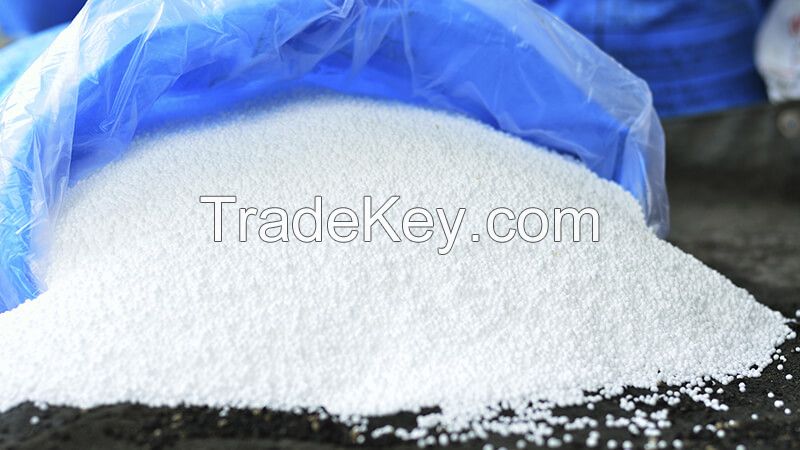|
Nitrogen:
|
*6% min.
|
|
Moisture:
|
0.3% max.
|
|
Biuret:
|
1% max.
|
|
Granulation:
|
1 - 4 mm ****4 % min.
|
|
Melting
Point:
|
******5 Degrees Celsius
|
|
Colour:
|
Pure White Prilled
|
|
Radiation:
|
Non - Radioactive
|
|
Free
Ammonia:
|
**0pxt ppm max.
|
|
Prilled,Treated
against caking, **0% free
from harmful
substances.
|
Large
Stock, Fast
Delivery
1.Product
Name: Urea
2.CAS NO: ******6
3.Purity: *6%min
4.Appearance:
granular
5.Application:
Fertilizer/Vehicle
diesel
Granular
Urea Fertilizer
*6%
Urea is a
nitrogen-containing
chemical product that is
produced in excess of
**0,**0,**0 tons per year
worldwide, of which more
than *0% of world
production is destined for
use as a fertilizer and is
an important raw material
for the chemical
industry.
Urea can be produced as
prills, granules, flakes,
pellets, crystals, and
solutions.
Urea, also known as carbamide, is
an organic compound with chemical
formula CO(NH2)2. It is a colorless,
odorless solid, highly soluble in
water, and practically non-toxic.
Dissolved in water, it is neither
acidic nor alkaline. introduction and
scientific invention of Urea is
identified as a life changing event in
the history of agriculture. Urea N*6%
is the worlds most common nitrogen
fertilizer and has been used uniformly
in all the agricultural lands of the
world. Never before this, agriculture
had seen such booming heights in
production as well as prosperity. Urea
is neutral in pH and can adapt to
almost all kinds of soils. It is a
waste product formed naturally by
metabolizing protein in humans as well
as other mammals, amphibians and some
fish. Urea is widely used in the
agricultural sector both as a
fertilizer and animal feed additive.
The last decade has seen urea
(carbamide) as a superb replacement to
ammonium nitrate and has unleashed new
unsurpassed production records. The
white, crystalline solid comprises of a
proportionate compound mixture of more
than one nutrients and contains *6%
nitrogen. Farmers have identified with
this chemical fertilizer as a great
ladder to huge success in agro
revolution. The nutrient composition
rendered by urea enhances the
productivity of the soil and enriches
its nutrient constituency. Providing
each plant with relevant elements
needed, urea sustains plant
life.
More than *0% of world industrial
production of urea is destined for use
as a nitrogen-release fertilizer. Urea
has the highest nitrogen content of all
solid nitrogenous fertilizers in common
use. Therefore, it has the lowest
transportation costs per unit of
nitrogen nutrient. Urea fertilizers
rapidly transform to the ammonium form
in soils.
Worldwide, urea N*6% is one of the most
widely used dry granular sources of
nitrogen. It is preferred by the
fertilizer
manufacturing industry since it is
relatively easy to manufacture. Urea
also has a high nitrogen content (*6%),
in comparison to other popular nitrogen
sources (i.e. ammonium nitrate). On a
ton for ton basis, urea contains *5%
more nitrogen than ammonium nitrate.
This has implications on the storage
and transport of nitrogen fertilizer
products. Urea is considered a
relatively stable product to store and
transport, and it is for this reason
that the transportation of urea is
considered very cost effective in
comparison to its most common
alternative, ammonium
nitrate.
Advantages of Urea
Fertilizer
1.
Superior Nitrogen
content
2.
Low production cost, as source is
natural
3.
Non-flammable and risk-free
storage
4.
Wide application range, for all types
of crops and
soils
5.
Neutral pH and harmless to crops and
soil


